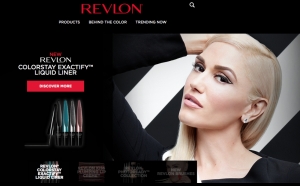Raqiyyah Pippins and Krithika Santhanam, Arnold & Porter Kaye Scholer LLP01.04.18
By now, it is no secret that the Food and Drug Administration (FDA) is monitoring personal care product1 marketing and using warning letters to remind companies of what causes a product to be a drug in the United States. Since 2012, FDA has issued several warning letters highlighting its position that many popular claims promising anti-aging or other skin improvement benefits cause the products to be drugs under the Federal, Food, Drug & Cosmetic Act (FDCA).2
As a result, many personal care product companies already contemplate the risk of receiving an FDA warning letter when contemplating the risk profile for product claims. A review of FDA enforcement in 2017 indicates that companies should continue to do so. As detailed here, however, two other risks should also be considered: one, FDA’s scrutiny of consumer reviews, and two, an increase in demand letters from private litigants seeking recovery for alleged unapproved drug claims under state law.
FDA Regulation in Personal Care
As background, the past few years have been marked with an increase in scrutiny of personal care products by FDA, including FDA efforts to define the regulatory boundaries governing different classes of personal care products and clarify the regulatory distinction between cosmetics and drugs. After hinting to industry in 2011 that it intended to monitor the category, FDA issued a series of warning letters in 2012 emphasizing its concerns regarding the use of hair removal, ant-aging and blemish removal related claims for products labeled as cosmetics, asserting its position that such claims cross the “lines” for cosmetic products and cause such products to be drugs under the FDCA. From 2013 to 2016, FDA re-affirmed its position regarding the types of beautification claims that it considers to be drug claims, while also highlighting some new areas for consideration: specifically, the regulatory lines governing beautification devices, personal care products for diseased populations and third-party contractors.
FDA’s classification of a personal care product matters because it can significantly impact the regulatory standards governing the product’s manufacturing, marketing and labeling. Products classified as OTC drugs must either receive pre-market approval by FDA or conform to FDA monographs—essentially an FDA-approved formula for a drug product. In contrast, while cosmetic manufacturers are responsible for ensuring product safety, products classified as cosmetics do not need to obtain pre-market FDA approval or conform to a specified pre-approved FDA formula.
How FDA categorizes a personal care product is determined, in part, by what FDA concludes to be the manufacturer’s “intended use” for the product. Among other things, FDA reviews product covers (e.g., advertisements, websites, labeling and ingredient statements) as evidence of a product’s intended use. Products marketed with drug claims, claims that a product is “intended for use in the diagnosis, cure, mitigation, treatment, or prevention of disease, and/or intended to affect the structure or any function of the body,” without pre-market approval by FDA or conforming to FDA monographs are considered “unapproved new drugs” and cannot be legally marketed in the US.4
FDA Targets Consumer Reviews
In previous years, claims that a personal care product affects the physical structure of the skin or provides recognized benefits commonly associated with drug products have been flagged as drug claims by FDA. This trend continued in 2017. FDA issued three warning letters alleging that claims to lighten or even skin tone, stimulate skin regeneration or “new skin cell production” or “promote cellular generation” are drug claims because they purportedly describe physiological effects on the structure or function of the body that are reserved for “drug” products under the FDCA.5
FDA also sent 10 warning letters to companies that touted recognized medicinal benefits for products labeled as cosmetics (e.g., “antiviral,” “antimicrobial,” “anti-inflammatory,” “immunostimulant,” and “wound healing”). For instance, in its July 2017 warning letter to Irie Star, LLC, FDA took the position that the company’s claim that the organic Tamanu oil in the Flawless - Equalizing Anti-Blemish Oil Serum is proven to have “antibacterial, anti-inflammatory and skin rebuilding properties” establishes the product containing the ingredient as an unapproved new drug under the FDCA “intended for use in the diagnosis, cure, mitigation, treatment, or prevention of disease and/or articles intended to affect the structure or any function of the human body.”6 Similarly, FDA’s February 2017 warning letter to Aegeia Skin Care, LLC alleged that claims that the chamomile flower in the company’s Nourishing Clay Mask has “anti-inflammatory properties” and can be used to “encourage digestion and boost the immune system,” cause the mask to be a drug.7
A new addition to FDA’s enforcement priorities, however, has been its focus on consumer reviews and testimonials. Because classification of a product as a “drug” vs. a “cosmetic” is centered on the manufacturer’s intended use for the product, there is, at times, a misconception that consumer reviews and testimonials present lower risk of FDA taking the position that a product is a drug.
FDA’s December 2016 warning letter to Healthy Habits, LLC hinted that FDA may primarily rely on consumer reviews and testimonials as evidence that a personal care product is intended for use as a drug. According to FDA’s warning letter, Healthy Habits’ DermaTox ointment product page on the company website includes consumer testimonials touting that the product helped with “Diabetes related skin conditions,” “severe shingles,” and “sunburns or any kind of burn.”
FDA’s 2017 warning letter to Moon Valley Natural Products reiterated FDA’s position on consumer reviews by including a section in the letter in which FDA specifically listed what it considered to be evidence of the manufacturer’s intended use for its personal care products “in the form of personal [consumer] testimonials recommending or describing the use of products for the cure, mitigation, treatment, or prevention of disease.”8
These warning letters serve as a reminder that customer reviews and testimonials can play a material role in FDA’s position regarding a company’s intended use for a product and, as a result, companies should consider monitoring the testimonials and reviews on their product websites to determine whether they include claims that can trigger FDA enforcement or, as discussed below, class action litigation.
Class Action Complaints
Historically, many companies have made business decisions about whether to promote personal care products with claims that FDA may consider to be drug claims based on a belief that the only material risk associated with such use is an FDA warning letter. Recent class action litigation, however, indicates that the risk to the company is not limited to FDA enforcement.
Importantly, each state has what is often referred to as a “mini-FDCA” that mirrors the FDCA and some state unfair and deceptive advertising practice (UDAP) statutes provide consumers with a private right of action to challenge the use of promotional strategies that violate the state’s mini-FDCA. In recent years, the plaintiffs’ bar has sought to recover damages from personal care product companies based on an allegation that FDA’s position that certain claims cause a personal care product to be an unapproved drug causes a product to violate the state’s UDAP statute. Indeed, within the past five years, dozens of class action complaints have been filed alleging that personal care product advertising is deceptive because it includes unapproved drug claims as defined by FDA warning letters issued to other companies that alleged that similar claim language constituted an unapproved drug claim.9
For example, in March 2017, Revlon entered into a $900,000 settlement that involved allegations that the company’s products were marketed with unapproved drug claims.10 In pertinent part, plaintiffs alleged that “Revlon markets the Age Defying DNA Advantage Products as cosmetics . . . [b]ut the Age Defying DNA Advantage Products are also drugs because an intended use of the products, as repeatedly demonstrated throughout Revlon’s packaging, advertising and marketing materials, is to affect the structure and function of the human body, specifically, DNA with human skin.”11 After alleging that Revlon made unsupported representations that the products “Help[] protect skin’s DNA to fight signs of aging,” “Targets undereye puffiness, dark circles, fine lines and wrinkles,” and “[H]elps skin to feel conditioned and look luminous, minimizing the appearance of discoloration due to the signs of aging[,]”12 the plaintiffs further alleged that the company’s claims were deceptive under state law because they contained unapproved drug claims. As support for their position, the plaintiffs cited a 2008 FDA Warning Letter to Natural Biology, Inc. in their complaint in which FDA alleged that products marketed with similar representations were unapproved new drugs.13
Similarly, in December 2016, a lawsuit was filed against Sunday Riley Modern Skincare alleging that the company’s Bionic Anti-Aging cream was marketed with unapproved drug claims.14 In particular, the plaintiffs alleged that the product, which has not been approved by FDA to be marketed as a drug, was promoted with the alleged drug claims: “[l]oaded with active ingredients that help to extend the lifespan of your skin” and “Highly active CoQ10, transreveratrol, biopeptides, copper peptides, centella asiatica, + EGCG (from green tea) help support healthy collagen growth and fight the effects of skin aging caused by UV exposure.”15
According to the complaint, these claims purport that the product “functions as a skin-altering drug, not as a mere cosmetic” and serve to market the product “as if it were an FDA approved drug that could change the physical structure and function of skin itself.”16
What Does It Mean?
The increased regulatory and litigation risk associated with FDA scrutiny of personal care products serves as an important reminder to companies that FDA is scrutinizing both claims made by companies and by consumers posted on the company website to determine the intended use for personal care products and that the implications of permitting a personal care product to be promoted with claims that FDA may consider to be reserved for drugs can extend beyond an FDA warning letter.
With this in mind, companies may want to consider expanding their marketing strategies to include a periodic review of the latest FDA warning letters to personal care product companies to stay abreast of the different types of claims considered by FDA to reflect intended drug uses and their hosted platforms to determine whether customer testimonials or reviews tout benefits that FDA has publicly deemed to reflect an intended drug use.
Taken together, these steps can help personal care product companies to more accurately assess the risk associated with a proposed marketing strategy and limit the risk that personal care product marketing will lead to unanticipated personal care product company liability.
About the Authors
Raqiyyah Pippins is counsel and Krithika Santhanam is an associate with Arnold & Porter Kay Scholer, an international law firm based in Washington DC. They may be reached at raqiyyah.pippins@apks.com, Tel: 202-942-6557 or krithika.santhanam@apks.com, Tel: 213-243-4217, respectively.
More info: https://www.apks.com/
References
As a result, many personal care product companies already contemplate the risk of receiving an FDA warning letter when contemplating the risk profile for product claims. A review of FDA enforcement in 2017 indicates that companies should continue to do so. As detailed here, however, two other risks should also be considered: one, FDA’s scrutiny of consumer reviews, and two, an increase in demand letters from private litigants seeking recovery for alleged unapproved drug claims under state law.
FDA Regulation in Personal Care
As background, the past few years have been marked with an increase in scrutiny of personal care products by FDA, including FDA efforts to define the regulatory boundaries governing different classes of personal care products and clarify the regulatory distinction between cosmetics and drugs. After hinting to industry in 2011 that it intended to monitor the category, FDA issued a series of warning letters in 2012 emphasizing its concerns regarding the use of hair removal, ant-aging and blemish removal related claims for products labeled as cosmetics, asserting its position that such claims cross the “lines” for cosmetic products and cause such products to be drugs under the FDCA. From 2013 to 2016, FDA re-affirmed its position regarding the types of beautification claims that it considers to be drug claims, while also highlighting some new areas for consideration: specifically, the regulatory lines governing beautification devices, personal care products for diseased populations and third-party contractors.
FDA’s classification of a personal care product matters because it can significantly impact the regulatory standards governing the product’s manufacturing, marketing and labeling. Products classified as OTC drugs must either receive pre-market approval by FDA or conform to FDA monographs—essentially an FDA-approved formula for a drug product. In contrast, while cosmetic manufacturers are responsible for ensuring product safety, products classified as cosmetics do not need to obtain pre-market FDA approval or conform to a specified pre-approved FDA formula.
How FDA categorizes a personal care product is determined, in part, by what FDA concludes to be the manufacturer’s “intended use” for the product. Among other things, FDA reviews product covers (e.g., advertisements, websites, labeling and ingredient statements) as evidence of a product’s intended use. Products marketed with drug claims, claims that a product is “intended for use in the diagnosis, cure, mitigation, treatment, or prevention of disease, and/or intended to affect the structure or any function of the body,” without pre-market approval by FDA or conforming to FDA monographs are considered “unapproved new drugs” and cannot be legally marketed in the US.4
FDA Targets Consumer Reviews
In previous years, claims that a personal care product affects the physical structure of the skin or provides recognized benefits commonly associated with drug products have been flagged as drug claims by FDA. This trend continued in 2017. FDA issued three warning letters alleging that claims to lighten or even skin tone, stimulate skin regeneration or “new skin cell production” or “promote cellular generation” are drug claims because they purportedly describe physiological effects on the structure or function of the body that are reserved for “drug” products under the FDCA.5
FDA also sent 10 warning letters to companies that touted recognized medicinal benefits for products labeled as cosmetics (e.g., “antiviral,” “antimicrobial,” “anti-inflammatory,” “immunostimulant,” and “wound healing”). For instance, in its July 2017 warning letter to Irie Star, LLC, FDA took the position that the company’s claim that the organic Tamanu oil in the Flawless - Equalizing Anti-Blemish Oil Serum is proven to have “antibacterial, anti-inflammatory and skin rebuilding properties” establishes the product containing the ingredient as an unapproved new drug under the FDCA “intended for use in the diagnosis, cure, mitigation, treatment, or prevention of disease and/or articles intended to affect the structure or any function of the human body.”6 Similarly, FDA’s February 2017 warning letter to Aegeia Skin Care, LLC alleged that claims that the chamomile flower in the company’s Nourishing Clay Mask has “anti-inflammatory properties” and can be used to “encourage digestion and boost the immune system,” cause the mask to be a drug.7
A new addition to FDA’s enforcement priorities, however, has been its focus on consumer reviews and testimonials. Because classification of a product as a “drug” vs. a “cosmetic” is centered on the manufacturer’s intended use for the product, there is, at times, a misconception that consumer reviews and testimonials present lower risk of FDA taking the position that a product is a drug.
FDA’s December 2016 warning letter to Healthy Habits, LLC hinted that FDA may primarily rely on consumer reviews and testimonials as evidence that a personal care product is intended for use as a drug. According to FDA’s warning letter, Healthy Habits’ DermaTox ointment product page on the company website includes consumer testimonials touting that the product helped with “Diabetes related skin conditions,” “severe shingles,” and “sunburns or any kind of burn.”
FDA’s 2017 warning letter to Moon Valley Natural Products reiterated FDA’s position on consumer reviews by including a section in the letter in which FDA specifically listed what it considered to be evidence of the manufacturer’s intended use for its personal care products “in the form of personal [consumer] testimonials recommending or describing the use of products for the cure, mitigation, treatment, or prevention of disease.”8
These warning letters serve as a reminder that customer reviews and testimonials can play a material role in FDA’s position regarding a company’s intended use for a product and, as a result, companies should consider monitoring the testimonials and reviews on their product websites to determine whether they include claims that can trigger FDA enforcement or, as discussed below, class action litigation.
Class Action Complaints
Historically, many companies have made business decisions about whether to promote personal care products with claims that FDA may consider to be drug claims based on a belief that the only material risk associated with such use is an FDA warning letter. Recent class action litigation, however, indicates that the risk to the company is not limited to FDA enforcement.
Importantly, each state has what is often referred to as a “mini-FDCA” that mirrors the FDCA and some state unfair and deceptive advertising practice (UDAP) statutes provide consumers with a private right of action to challenge the use of promotional strategies that violate the state’s mini-FDCA. In recent years, the plaintiffs’ bar has sought to recover damages from personal care product companies based on an allegation that FDA’s position that certain claims cause a personal care product to be an unapproved drug causes a product to violate the state’s UDAP statute. Indeed, within the past five years, dozens of class action complaints have been filed alleging that personal care product advertising is deceptive because it includes unapproved drug claims as defined by FDA warning letters issued to other companies that alleged that similar claim language constituted an unapproved drug claim.9
For example, in March 2017, Revlon entered into a $900,000 settlement that involved allegations that the company’s products were marketed with unapproved drug claims.10 In pertinent part, plaintiffs alleged that “Revlon markets the Age Defying DNA Advantage Products as cosmetics . . . [b]ut the Age Defying DNA Advantage Products are also drugs because an intended use of the products, as repeatedly demonstrated throughout Revlon’s packaging, advertising and marketing materials, is to affect the structure and function of the human body, specifically, DNA with human skin.”11 After alleging that Revlon made unsupported representations that the products “Help[] protect skin’s DNA to fight signs of aging,” “Targets undereye puffiness, dark circles, fine lines and wrinkles,” and “[H]elps skin to feel conditioned and look luminous, minimizing the appearance of discoloration due to the signs of aging[,]”12 the plaintiffs further alleged that the company’s claims were deceptive under state law because they contained unapproved drug claims. As support for their position, the plaintiffs cited a 2008 FDA Warning Letter to Natural Biology, Inc. in their complaint in which FDA alleged that products marketed with similar representations were unapproved new drugs.13
Similarly, in December 2016, a lawsuit was filed against Sunday Riley Modern Skincare alleging that the company’s Bionic Anti-Aging cream was marketed with unapproved drug claims.14 In particular, the plaintiffs alleged that the product, which has not been approved by FDA to be marketed as a drug, was promoted with the alleged drug claims: “[l]oaded with active ingredients that help to extend the lifespan of your skin” and “Highly active CoQ10, transreveratrol, biopeptides, copper peptides, centella asiatica, + EGCG (from green tea) help support healthy collagen growth and fight the effects of skin aging caused by UV exposure.”15
According to the complaint, these claims purport that the product “functions as a skin-altering drug, not as a mere cosmetic” and serve to market the product “as if it were an FDA approved drug that could change the physical structure and function of skin itself.”16
What Does It Mean?
The increased regulatory and litigation risk associated with FDA scrutiny of personal care products serves as an important reminder to companies that FDA is scrutinizing both claims made by companies and by consumers posted on the company website to determine the intended use for personal care products and that the implications of permitting a personal care product to be promoted with claims that FDA may consider to be reserved for drugs can extend beyond an FDA warning letter.
With this in mind, companies may want to consider expanding their marketing strategies to include a periodic review of the latest FDA warning letters to personal care product companies to stay abreast of the different types of claims considered by FDA to reflect intended drug uses and their hosted platforms to determine whether customer testimonials or reviews tout benefits that FDA has publicly deemed to reflect an intended drug use.
Taken together, these steps can help personal care product companies to more accurately assess the risk associated with a proposed marketing strategy and limit the risk that personal care product marketing will lead to unanticipated personal care product company liability.
About the Authors
Raqiyyah Pippins is counsel and Krithika Santhanam is an associate with Arnold & Porter Kay Scholer, an international law firm based in Washington DC. They may be reached at raqiyyah.pippins@apks.com, Tel: 202-942-6557 or krithika.santhanam@apks.com, Tel: 213-243-4217, respectively.
More info: https://www.apks.com/
References
- For the purposes of this article, “personal care product” is defined to include any product (including a device) that is topically applied to improve a person’s appearance.
- See e.g., FDA Warning Letter to Bioque Technologies, Inc (Oct. 7, 2016); FDA Warning Letter to Peter Thomas Roth Labs, LLC (July 22, 2016); FDA Warning Letter to Sircuit Cosmeceuticals (July 19, 2016); FDA Warning Letter to Annmarie Gianni Skin Care (July 15, 2016); FDA Warning Letter to Crescent Health Center, Inc. (April 20, 2016); and FDA Warning Letter to Cosmetic Dermatology, Inc. (Dec. 3, 2015).
- Color additives are the only cosmetic ingredients that must be pre-approved by FDA.
- FDCA section 505(a).
- See e.g., FDA Warning Letter to Be Natural Organics (July. 19, 2017); FDA Warning Letter to Cape Fear Naturals (March. 2, 2017); and FDA Warning Letter to Skin 2 Spirit, LLC (Aug. 10, 2017).
- FDA Warning Letter to Irie Star, LLC (July 6, 2017).
- FDA Warning Letter to Aegeia Skin Care, LLC (Feb. 2, 2017).
- FDA Warning Letter to Moon Valley Natural Products LLC (Aug. 11, 2017).
- See e.g., Reid v. GMC Skin Care USA Inc., 2016 U.S. Dist. LEXIS 14001, at *30 (N.D.N.Y. 2016); Kimani Adams v. Reviva Labs, Inc., No. 1:15-cv-00495-GTS-DJS (N.D.N.Y. 2015); Geri Marshall v. PH Beauty Labs, Inc. No. 2:15-cv-02101-DDP-AGR (Cal. Super. Ct. 2015); and Constanza Nino v. L’Oreal USA, Inc. et al, No. 1:12-cv-23462-JLK (S.D. Fla. 2012).
- Elkind v. Revlon Consumer Prods. Corp., 2017 U.S. Dist. LEXIS 24512, at *8 (E.D.N.Y. 2017)
- Id. Complaint at 10-11.
- Id. Complaint at 11.
- Id. n.4.
- Class Action Complaint & Demand for Jury Trial, Helena Armstrong et al v. Sunday Riley Modern Skincare, LLC, No. 1:16-cv-09329 (S.D.N.Y. 2016).
- Id. Complaint at 3.
- Id. Complaint at 2, 10.





















